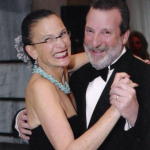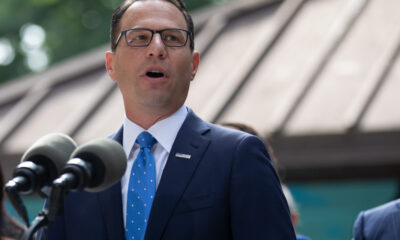Education
CHAPTER 8: Constructivism Impedes Reality-Testing
Space Is No Longer the Final Frontier—Reality Is [upcoming release April 2024]
Constructivism – the idea of transforming education into dialogue – does not give its students sufficient grounding in reality.

Constructivism is a learning theory that has its beginnings in the educational philosophy of John Dewey (1859–1952) and the work of Swiss developmental psychologist Jean Piaget (1896–1980) and Soviet psychologist Lev Vygotsky (1896–1934).
Origins of constructivism
Piaget believed that human beings pass through four stages of cognitive development based on our brain’s growing ability to think in new ways. His theory of cognitive development focuses on childhood and education. In Piaget’s view the learner is a unique individual, whose childhood interactions and explorations influence his development. Piaget believed that children act on their environment to learn, and that the function of social interaction is to move the child away from the self-absorption of early childhood. Piaget saw childhood development in universal human terms.
Lev Vygotsky, on the other hand, focused on learning as a social process and developed the sociocultural theory of development called Social Constructivism. Vygotsky considered the learner to be a social being, whose development is influenced by environmental factors. He saw childhood development in culturally determined terms, and believed that children interact socially with their environment in order to learn the cultural values of their specific society. Vygotsky believed that behavior cannot be understood outside its cultural setting, and that culture actually shapes cognition.
The divergent perspectives of Piaget and Vygotsky parallel the differences in educational philosophies and pedagogy that we see in traditional education versus today’s politicized education.
Definitions
An article by educator Chris Drew, PhD, published May 13, 2023, “What Is Constructivism in Education? Piaget’s Pros & Cons,”[i] defines Constructivism, describes its key concepts, and compares traditional teachers with constructivist teachers:
Definition: The constructivist learning theory explains that we learn by “constructing” knowledge in our minds through interaction with our environments. Constructivism argues that learners have an active role in thinking things through, mulling them over, and coming to logical conclusions. We also build on our prior knowledge, like a builder constructing his skyscraper.
Key Concepts: Learning is a cognitive process; we learn through experiences; we learn through social interactions; we use prior knowledge to make sense of new information; learning occurs in linear stages; students should learn actively rather than passively….
Central to this theory is the idea that we learn by “mulling over” new ideas in our heads and come to our own conclusions through logic and reasoning. To achieve this sort of learning, students need to engage in active learning, learning by doing, and personal experiences.
Chris Drew’s bias toward Constructivism is evident in his description:
Constructivism in education is the dominant educational theory in the 21st Century. It helps students to develop 21st Century skills such as collaboration, cooperation and creativity.
It is also conspicuous in his comparison of teachers’ roles:
Traditional Teacher:
Monologue (teacher talks)
Tells the answers
Expects one “correct” answer
Believes they know everything
Teacher-centered classroom
Teaches theories
One size fits all lessons
Teacher as Facilitator:
Dialogue (teacher and students discuss)
Asks questions and guides
Lets students come up with their own answers
Sees themselves as a co-learner
Student-centered classroom
Links theories to practical experiences
Differentiated lessons to meet students’ cognitive needs
Educational reformer Bruce Deitrick Price offers a very different view of Constructivism and its catastrophic effects on education. In his Canada Free Press article published September 12, 2019, “K–12: How Constructivism constructs confusion,”[ii] Price writes:
Constructivism is not just another educational gimmick. It can be used in every class, for every subject, and with students of all ages. It is multifaceted, ubiquitous, and grandiose. In fact, the Education Establishment wants you to believe that Constructivism is the King Kong of instructional theories. The educrats want you to take it home for dinner, marry it, and live happily ever after.
We are told that Constructivism adds immensely to the educational experience. On the other hand, students exposed to this thing—and virtually all American students have been exposed—seem to become dumber. In some mysterious way, Constructivism is intellectually befuddling. The acquisition of new knowledge is stymied. WNET, a TV station in Manhattan, prepared a long presentation extolling and explaining Constructivism. “Constructivism is basically a theory—based on observation and scientific study—about how people learn. It says that people construct their own understanding and knowledge of the world, through experiencing things and reflecting on those experiences.” That’s the key claim. You construct your own knowledge. It is not out there somewhere in the world. You construct it. Really. Consider an instance of learning. The teacher says, “The capital of France is Paris, a very beautiful city.” Does all that verbiage about people constructing their own understanding and experiencing things, and reflecting on those experiences, add anything to the commonsense understanding of what happens when a teacher tells students about Paris?
WNET continues: “The constructivist teacher provides tools such as problem-solving and inquiry-based learning activities with which students formulate and test their ideas, draw conclusions and inferences, and pool and convey their knowledge in a collaborative learning environment.” Let’s imagine a teacher telling students, “Most early settlers in North America came from England or Spain. Crossing the Atlantic Ocean in a small sailing ship is a dangerous adventure.” Now look at the WNET spiel. Why do students need to formulate and test ideas? Why do we have to convey the knowledge in a collaborative learning environment? More steps, more clutter. Imagine you’re a teacher who wants to teach about the American Revolution, why water freezes, or how the dinosaurs lived. Why do we need the clutter in any of those teaching scenarios? My suspicion is that this clutter is an obstacle, obviously so. We have started to see what may be Constructivism’s unavoidable negative. Constructivism adds distractions, like a hyperactive TV series when a child is trying to read his first book. In short, there’s too much going on. WNET continues: “Constructivism transforms the student from a passive recipient of information to an active participant in the learning process. Always guided by the teacher, students construct their knowledge actively rather than just mechanically ingesting knowledge from the teacher or the textbook.”
Apparently when somebody tells you something you are passive and that’s bad. You are mechanically ingesting. But if we label the classroom constructivist, everything changes for the better. Now you are actively constructing knowledge. Do you see any change? WNET wants us to know: “Students are not blank slates upon which knowledge is etched. They come to learning situations with already formulated knowledge, ideas, and understandings. This previous knowledge is the raw material for the new knowledge they will create.” Really? What does the child know about someone sailing from Spain? Nothing. That’s why it’s exciting. The conceit in Constructivism is that the speaker or teacher doesn’t add very much. You (a student) create the whole experience in your brain, i.e., you construct it. Is this a reasonable expectation? This next passage is so absurd, you might think I wrote it as satire. Not so. WNET explains: “An elementary school teacher presents a class problem to measure the length of the Mayflower. Rather than starting the problem by introducing the ruler, the teacher allows students to reflect and to construct their own methods of measurement. One student offers the knowledge that a doctor said he is four feet tall. Another says she knows horses are measured in ‘hands.’ The students discuss these and other methods they have heard about, and decide on one to apply to the problem.”
I think this is the paradigm of what is wrong. The obvious next step was to see a picture or a model of the ship, with people nearby for a sense of scale. You could go outside and walk off the basic design of the ship. Children learn about the Mayflower, not about measuring horses. There seems to be a lot of bait-and-switch in Constructivism. You can easily imagine that this elementary school teacher would never reach the heart of any subject. Every comment by every student would be a seductive avenue of distraction. WNET waxes ever more frenzied: “Students control their own learning process, and they lead the way by reflecting on their experiences. This process makes them experts of their own learning.”Lead the way? Experts of their own learning? Wouldn’t it be better if they became expert in the subjects being studied? WNET: “The teacher helps create situations where the students feel safe questioning and reflecting on their own processes, either privately or in group discussions. The teacher should also create activities that lead the student to reflect on his or her prior knowledge and experiences.” Reflecting on their own processes? Anything, you see, but the new knowledge we want them to learn. Ironically, Constructivism seems designed to insulate kids from new knowledge, to keep them busy with extraneous details and tangential activities. WNET says: “The main activity in a constructivist classroom is solving problems.” Maybe. But in a real classroom the main activity is learning today what you didn’t know yesterday.
Constructivism is an educational humanitarian hoax that presents its destructive methodology and relativist perspective as superior and scientific. The word Constructivism is as misleading as its source: John Dewey and his educational reform movement he called progressive education. Dewey, the “Father of American Education,” believed that “what” students were taught was not as important as “how” students were taught. His focus was on form, not content.
As discussed in Chapter 5, Dewey was a globalist, but he was also an elitist who did not believe in the value of teaching mathematics, geography, history, science, art, philosophy, archaeology, or any objective truths to the masses. His 1900 educational manifesto, The School and Society,[iii] was presented as a three-part lecture series. In Lecture 1, “The School and Social Progress,” Dewey begins:
We are apt to look at the school from an individualistic standpoint, as something between teacher and pupil, or between teacher and parent. That which interests us most is naturally the progress made by the individual child of our acquaintance, his normal physical development, his advance in ability to read, write, and figure, his growth in the knowledge of geography and history, improvement in manners, habits of promptness, order, and industry— it is from such standards as these that we judge the work of the school. And rightly so. Yet the range of the outlook needs to be enlarged. What the best and wisest parent wants for his own child, that must the community want for all of its children. Any other ideal for our schools is narrow and unlovely; acted upon, it destroys our democracy. All that society has accomplished for itself is put, through the agency of the school, at the disposal of its future members. All its better thoughts of itself it hopes to realize through the new possibilities thus opened to its future self. Here individualism and socialism are at one….
The mere absorption of facts and truths is so exclusively an individual affair that it tends very naturally to pass into selfishness. There is no obvious social motive for the acquirement of mere learning, there is no clear social gain in success thereat.
A republic, not a democracy
Words matter––and some words matter more than others. The United States of America was founded as a republic, not a democracy. The distinction is essential and often deliberately obfuscated by the enemies of individualism. The main difference between a republic and a democracy is the degree to which its citizens control the process of making laws. In a republic, the people elect representatives to make laws according to the constraints of a constitution. In a democracy, the majority has almost unlimited power to make laws, and minorities have few protections from the will of the majority. Also: in a republic, the constitution protects the rights of all people from the will of the majority. In a democracy, individual rights can be overridden by the will of the majority. Individualism and socialism are never “at one.”
The United States Constitution is the supreme law of the land that protects individualism and individual rights, the hallmarks of Americanism. We are a constitutional republic. It is a grave and consequential error to assume that a collectivist innocently uses the word democracy in its colloquial usage as a synonym for republic. The enemies of freedom—socialists, communists, and globalists—exploit the word in order to confuse the public, collapse our republic, and replace it with the mob rule of pure democracy that our Founding Fathers definitively and categorically rejected.
Constructivism facilitates collectivism
Collectivist John Dewey believed that experiential learning, social learning, and a basic Constructivist approach to pedagogy could achieve social reconstruction in America. He insisted that education and learning are social and interactive processes, and that schools are the appropriate institutions where social reform should take place. Dewey’s manifesto is the bible for the philosophical shift in American education from traditional, foundational learning to progressive education. What most Americans have not realized is that “progressive” education is not an advancement in knowledge and skills; to the contrary, it is a pivotal step in the incremental movement toward collectivism, socialism, globalism, and one-world government.
Perhaps the most disturbing of Constructivism’s deceitful claims is “The teacher helps create situations where the students feel safe questioning and reflecting on their own processes, either privately or in group discussions.” Once again, we see the emphasis on feelings, subjective reality.
Constructivism is a dangerous, crippling methodology designed to confuse children and deny them the foundational knowledge and skills required for critical thinking and life as a productive citizen in a constitutional republic. Constructivism denies objective reality by making everything a matter of opinion. The subjective reality it embraces intentionally impedes children’s developing ability to reality-test. Johnny’s feelings are not facts, and Johnny’s opinions are not equivalent to his teacher’s facts.
A deadly weapon
Generations of teachers trained in these methods have become ideological soldiers for progressive education. Children are not the only ones who live what they learn; so do indoctrinated teachers. Constructivism is an educational Weapon of Mass Destruction in globalism’s attack on America.
From Pundicity.com; appears by arrangement – Ed.
References
[i] What Is Constructivism in Education? Piaget’s Pros & Cons; https://helpfulprofessor.com/constructivism/
[ii] K-12: How Constructivism constructs confusion; https://canadafreepress.com/article/k-12-how-constructivism-constructs-confusion
[iii] The School and Society, John Dewey, University of Chicago Press, 1915; https://archive.org/details/schoolsociety00dewerich/page/n7/mode/2up
Linda Goudsmit is the devoted wife of Rob and they are the parents of four children and the grandparents of four. She and Rob owned and operated a girls’ clothing store in Michigan for forty years before retiring to the sunny beaches of Florida. A graduate of the University of Michigan in Ann Arbor, Linda has a lifelong commitment to learning and is an avid reader and observer of life. She is the author of the philosophy book Dear America: Who’s Driving the Bus? and its political sequel, The Book of Humanitarian Hoaxes: Killing America with ‘Kindness’, along with numerous current affairs articles featured on her websites lindagoudsmit.com and goudsmit.pundicity.com. The Collapsing American Family: From Bonding to Bondage and her forthcoming book, Space Is No Longer the Final Frontier––Reality Is, complete Linda’s quadrangle of insightful books that connect the philosophical, ideological, political, and psychological dots of globalism's War on America and individual sovereignty.
Linda believes the future of our nation requires reviving individualism, restoring meritocracy, and teaching critical-thinking skills to children again. Her illustrated children’s book series, Mimi’s Strategy, offers youngsters new and exciting ways of solving their problems and having their needs met. Mrs. Goudsmit believes that learning to think strategically rather than reacting emotionally is a valuable skill that will empower any child throughout his or her life. Plus, in Linda’s words, “I have yet to meet the child who would prefer a reprimand to a kiss.”
-

 Executive4 days ago
Executive4 days agoSecret Service chief gets no solace
-

 Executive3 days ago
Executive3 days agoWaste of the Day: Louisville Taxpayers Pay Nearly $600,000 For Empty Building’s Maintenance, Security
-

 Guest Columns4 days ago
Guest Columns4 days agoFear Itself: Democrats’ Favorite Strategy Caused Their Current Chaos
-

 Executive3 days ago
Executive3 days agoWhere is Joe Biden – or Jill?
-

 Executive1 day ago
Executive1 day agoWaste of the Day: Throwback Thursday: Cities Used Crime Prevention Funds on Soccer Games, Paper Shredding
-

 Executive2 days ago
Executive2 days agoFacile and politically motivated suggestions
-

 Civilization4 days ago
Civilization4 days agoBuild Iron Dome in the United States To Prepare for Israel’s Worst Day
-

 Executive4 days ago
Executive4 days agoThe Emerging GOP Plan To Beat Kamala Harris














